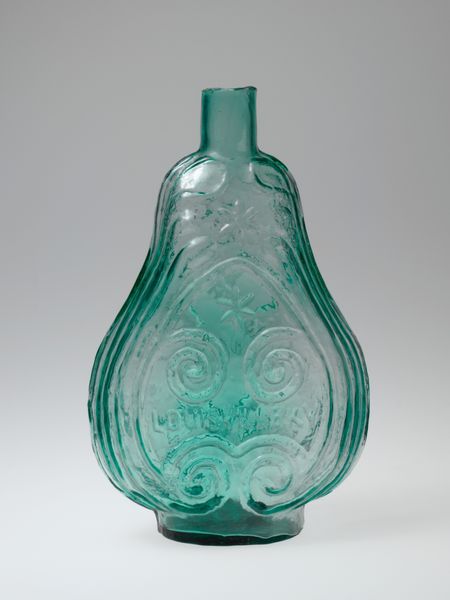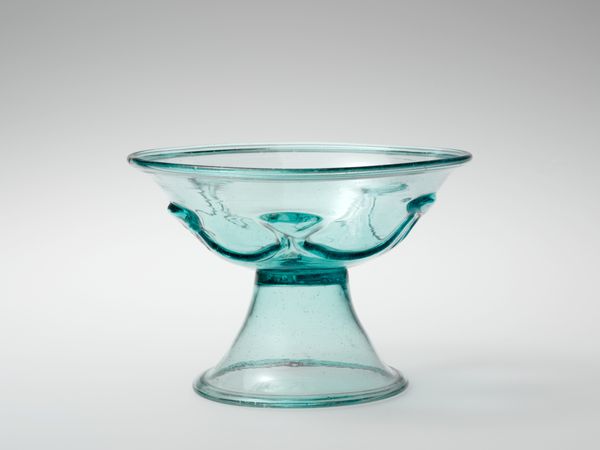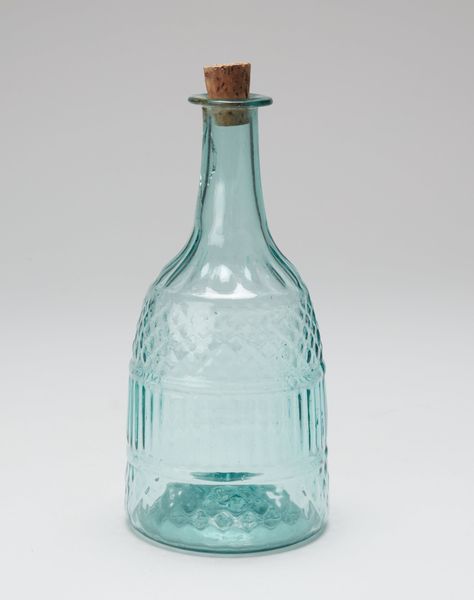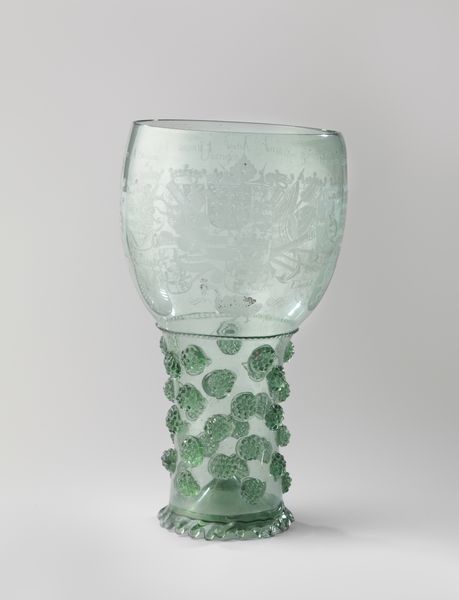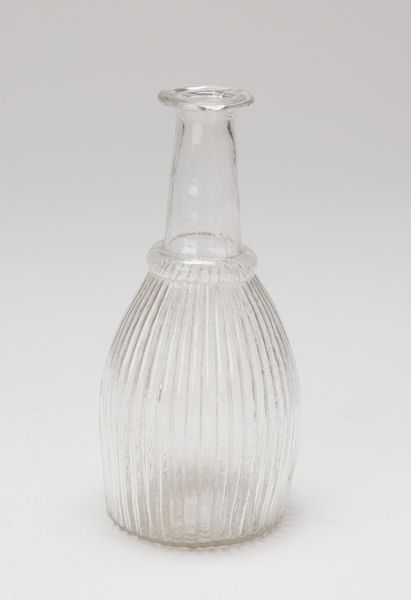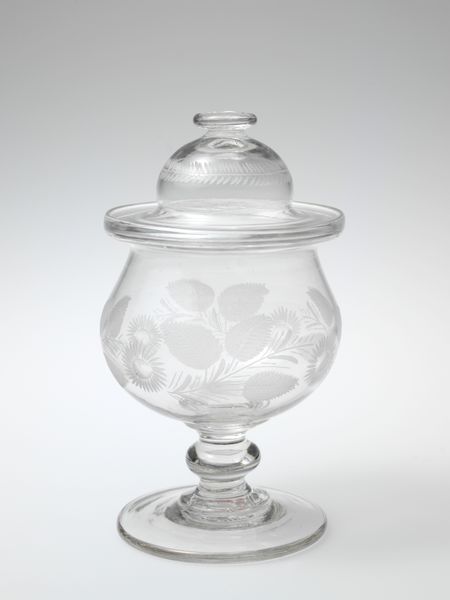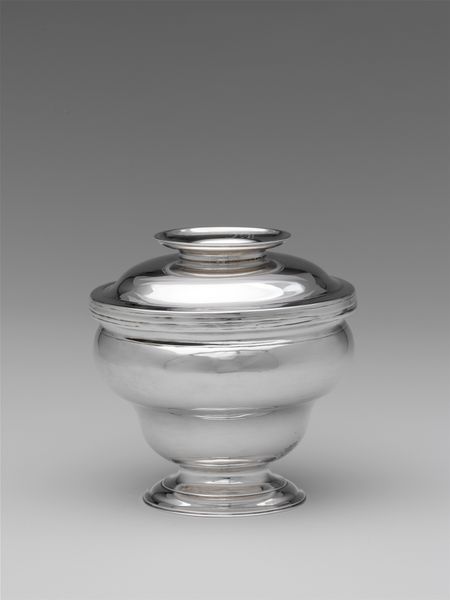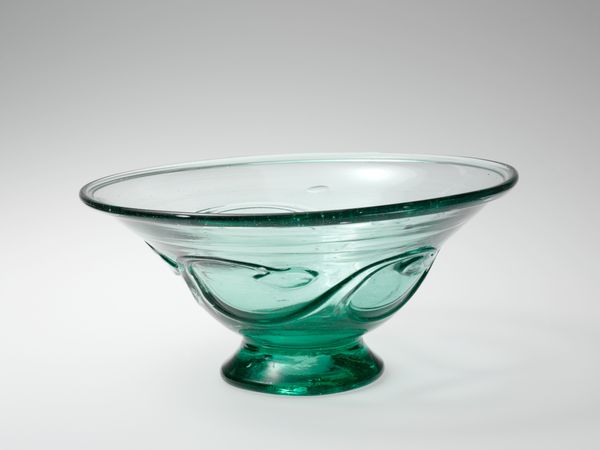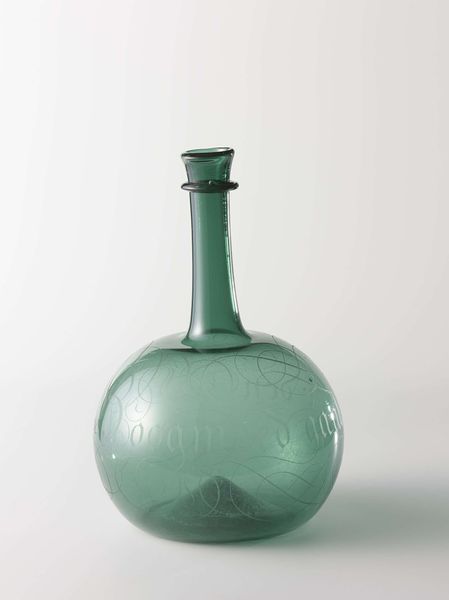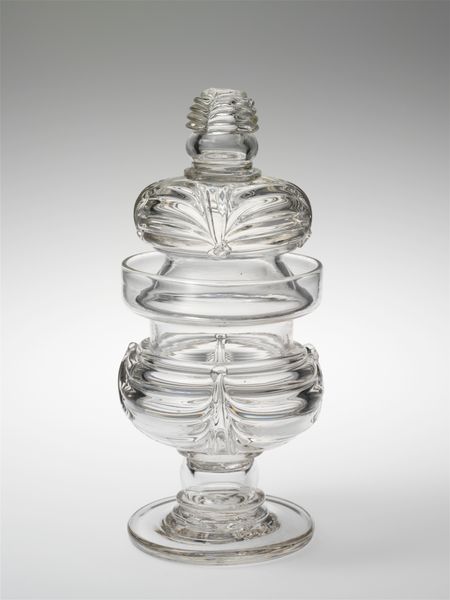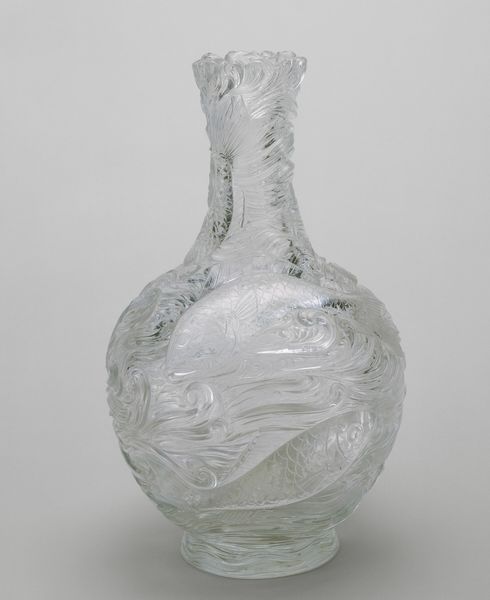
glass
#
glass
#
decorative-art
Dimensions: 21.4 × 10.8 cm (8 7/16 × 4 1/4 in.)
Copyright: Public Domain
Curator: Before us, we have a “Covered Sugar Bowl,” crafted sometime between 1835 and 1855, origin unknown. It's part of the decorative arts collection, composed entirely of delicate glass. Editor: My first thought is its whimsical, almost ethereal presence. The teal glass, with those delicate swirls, feels both substantial and dreamlike. It seems almost too pretty to contain something as ordinary as sugar. Curator: The historical context surrounding sugar at this time is incredibly relevant. While we consider it a household staple today, in the early to mid-19th century, sugar production was deeply entwined with slavery and colonial exploitation. Editor: Exactly! We can’t separate the beautiful form of the bowl from the realities of its consumption. Glass-making, too, has its own complex history. Thinking about the skilled labor and industrial processes involved, from gathering the raw materials to the intricate blowing and shaping of the glass. It’s a study in class dynamics right on the table. Curator: And gender as well! Think of the domestic space in which this sugar bowl would have resided, and the enslaved labor, almost always people of color, often women, who bore the burden of the crop's cultivation. As something found at the heart of the middle-class family, the very act of pouring the contents of the bowl might represent the enjoyment of luxury. It is anything but separate from the history of racial and economic inequities. Editor: It makes you reconsider the purpose, beyond mere sweetness, to show off. In a time of limited luxuries, how materials signal social standing, privilege, access... Curator: I think analyzing art through the lens of social justice movements forces us to consider previously unasked questions and really push back against dominant historical narratives. Editor: Right. When we understand both, we gain a much richer and more nuanced understanding. This sugar bowl can hold so much more than just sweetener—it encapsulates history, labor, and profound social dynamics.
Comments
No comments
Be the first to comment and join the conversation on the ultimate creative platform.
